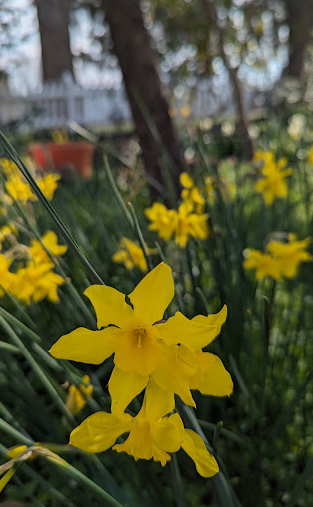Weeping Butterfly Bush
- Clifford Brock
- Jun 6, 2021
- 3 min read
Over a decade ago I first encountered the weeping butterfly bush. At first, I had no idea it was a Buddleia- I thought it must be some exotic Salvia or some other weird thing. All I knew was it was something new to me, and I had to have one!

Buddleja or Buddleia, there is still heated debate as to how it's spelled, but I prefer the phonetic, Buddleia, is a popular ornamental woody shrub grown all over the temperate world. What we usually encounter in garden centers and landscapes is B. davidii. It displays numerous upright "cone-like" flowers that smell sweetly of honey and range in color from white to red to almost blue. Breeders have created all kinds of forms, from tiny dwarfs like 'Ice Chip' to uncommon colors like the yellow 'Honeycomb'. As the name suggests, most butterfly bushes are a magnet for all kinds of Lepidoptera, or butterflies and moths.

Because most Buddleias originated in east Asia and some have invasive attributes, many conservationists label them all as noxious weeds; in fact, some states like Oregon have completely banned their sale! While B. davidii is invasive in certain places, including the British Isles and the Pacific Northwest, butterfly bushes do not invade natural areas here in the deep south. They can be a problem along streams in the southern Appalachians, but I've never seen them invade natural areas here in the piedmont.

Far less common are the species, Buddleia alternifolia and B. lindleyana. These exhibit weeping or arching branching and have long spires of purple tubular flowers. I grow B. lindleyana near the screened porch at my mom's house because it is just so irresistible to hummingbirds! Disclaimer, I must mention that this species is highly stoloniferous, that is, it travels! In the same way as mint and beebalm, this is a plant that you are going to have to frequently "rein in". Because of this tendency, I'd recommend planting it somewhere it can roam. And unlike the more common davidii hybrids, this plant can tolerate moderately shady places, especially under pines.

Luckily, plant breeders have developed new cultivars that provide similar weeping effects, but on more restrained or less invasive plants. The Cascade series comes to mind from Walters Gardens. My only direct experience with these new cultivars is with 'Grand Cascade'. It combines the full and dense flowers of the traditional B. davidii with the long arching flowers of B. lindleyana. Though, it should be noted, that I've not seen the same level of hummingbird activity on these new hybrids. As a general rule of thumb, many plant hybrids offer less pollen and nectar than the straight species. You can purchase many of these weeping hybrids from Plant Delights Nursery, https://www.plantdelights.com/products/buddleia-grand-cascade-pp-30868

With most butterfly bushes, especially the common davidii cultivars, I'd recommend pruning back to the ground each winter because they bloom best, and generally look best, as dense herbaceous shrubs. So in the same way you cut back your hibiscus or salvia, I'd treat these specimens as a kind of perennial, albeit a really vigorous and robust one. Yet the weeping species seem to bloom best if left alone or minimally pruned. I tend to cut mine back by about a half, but if you want to achieve the maximum arching effect, I'd suggest leaving it to do its thing.
This is just the tip of the iceberg when it comes to Buddleias. I do hope more people will experiment with both the new cultivars and the weeping species... I feel they have so much to offer the southern landscape!



Comments